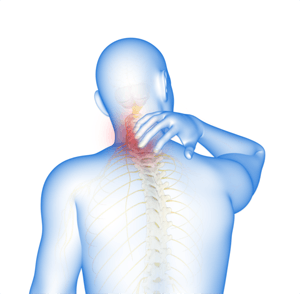
What is Cervical Spondylosis (Cervical Osteoarthritis)?
Cervical spondylosis, also called arthritis of the neck, is an age-related medical condition characterized by deterioration of spinal joints, vertebrae, discs, and ligaments in your neck.
The condition can be caused by any of the following:
- Wear and tear of cartilage and bones due to aging or overuse
- Bony projections (bone spurs) along the edges of bones
- Dried out (dehydrated) or cracked (herniated) spinal discs
- Injury to the neck (during a fall, accident, etc.)
- Repetitive and prolonged stress on your neck
- Family history of cervical spondylosis (genetic factor)
- Overweight, inactive lifestyle, smoking
Signs and Symptoms of the Condition
Most people do not experience significant symptoms and some may never experience any signs. Many people can even perform normal daily activities. However, if symptoms occur they can range from mild to severe, and may develop gradually or suddenly.
The expected symptoms of cervical spondylosis include:
- A stiff and painful neck that gradually worsens
- Pain while tilting your neck backward
- Headaches in the back of your head
- Chronic and severe pain in your shoulders or arms or legs
- Tingling or numbness in your shoulders or arms or legs
- Muscle weakness in your arms and fingers
- Pain that increases when standing, sitting, sneezing or coughing
- Lack of coordination, loss of balance, difficulty in walking
- Loss of bladder or bowel control
What If Cervical Spondylosis is Left Untreated?
If the condition is not treated, your spinal cord or nerve roots can become severely compressed leading to permanent damage. You may even find it difficult to perform daily activities.
Diagnosis
Your doctor is likely to start the diagnosis by asking you questions regarding typical symptoms. This may be followed by a detail physical examination of your neck, back, and shoulders. Finally, the doctor may order one or more imaging tests such as:
- Neck X-ray
- CT scan
- MRI scan
- Myelography
- Electromyogram (EMG)
How is Cervical Spondylosis Treated?
Non-surgical methods are often found to be quite effective in treating cervical spondylosis.
If the condition is mild, you may be asked to:
- Try an OTC pain reliever
- Use a cold pack or a heating pad on your neck
- Apply a soft neck brace or a collar
Your doctor may also recommend physical therapy including certain exercises and neck traction using weights. Medications such as muscle relaxants, narcotics, anti-epileptic or nonsteroidal anti-inflammatory drugs (NSAIDs) and steroid injections can also be prescribed as alternative options.
If the condition is severe and does not respond to any of the above treatment, your doctor may opt for surgery. The procedure may involve:
- Cutting away bone spurs, parts of the neck bones or herniated discs to give your spinal cord and nerves more room.
- Removing part of a vertebra in your neck and replacing with a bone graft or implant and hardware.



